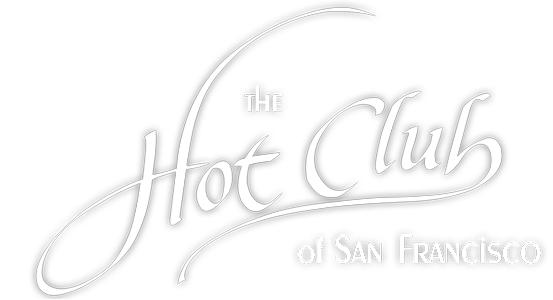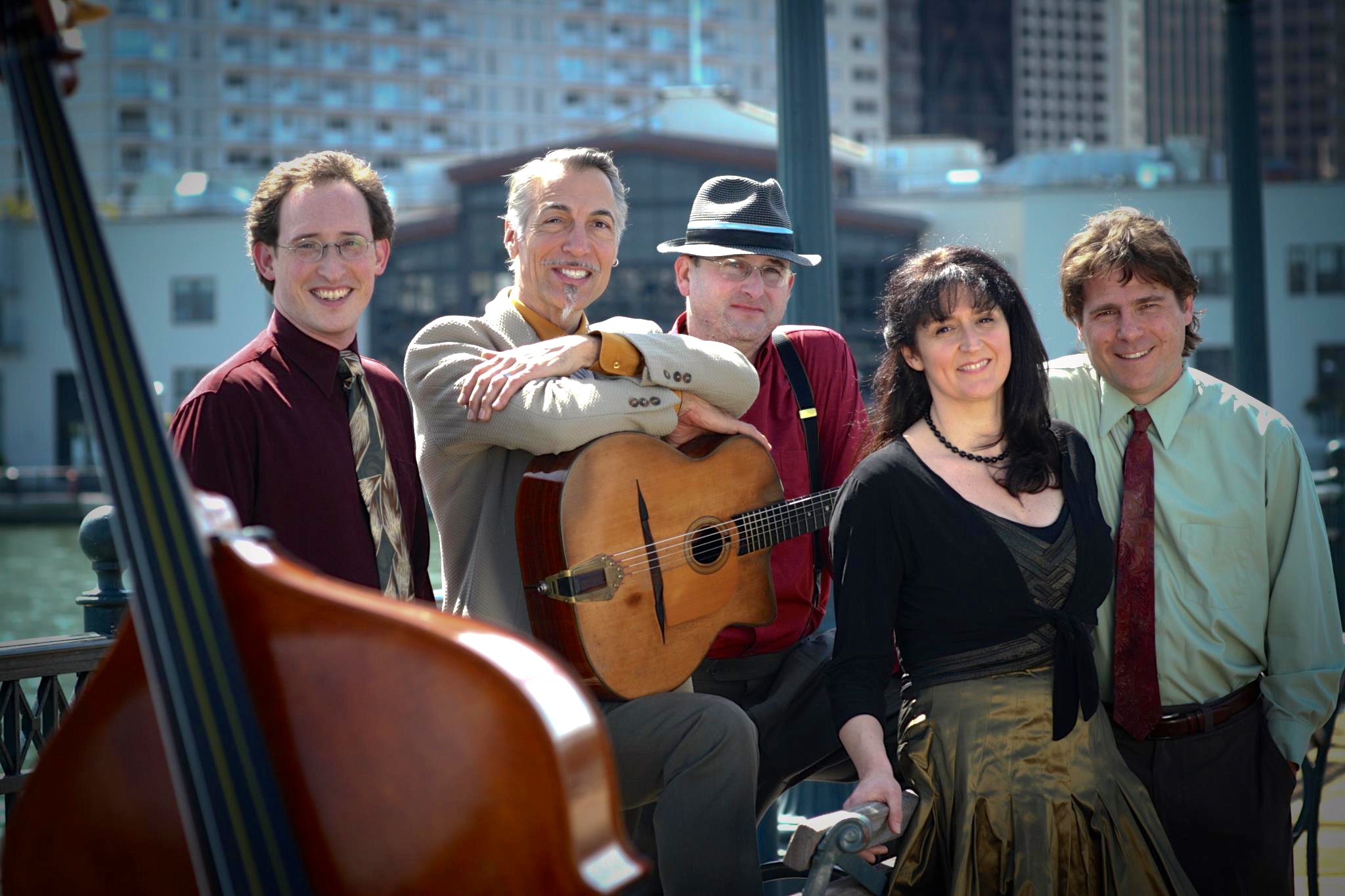REVIEW: Hot sound, strange visuals
By Carrie Seidman, Herald-Tribune
Though we often tune it out in deference to our focus on the screen, a great soundtrack can amplify and augment a film, adding to the dramatic action, setting a mood or signalling an impending disaster. In the days of silent film, that aural experience was often supplied by a live pianist, playing improvisationally for lack of any libretto.
That's the idea behind Hot Club of San Francisco's "Cinema Vivant" show, the latest in the Ringling Museum's New Stages series. The five members of this West Coast-based group — Paul Mehling (lead guitar), Evan Price (violin), Sam Rocha (bass), Jeff Magidson (rhythm guitar) and Isabelle Fontaine (rhythm guitar and vocals) — play what's known as "gypsy jazz" against a backdrop of some of the earliest stop action animated films that still exist.
Performing in the museum's Historic Asolo Theatre, this combination of sights, sounds and surroundings made for a vibrant evening of near sensory-overload.
Mehling, a silver-haired, earringed showman with a Cheshire Cat smile, founded the ensemble in 1991 (some of the members have since changed) to preserve and promote the sound of the pioneering Django Reinhardt and Stephane Grappelli's Hot Club de France of the 1930s. Also known as jazz manouche after its French origins, the instrumentation is entirely acoustic and stringed, with no percussion or horns. (Rocha did pull out a muted trumpet for one brief interlude.)
A blend of classic Spanish guitar, bluegrass rhythms and fast swing, the style requires a demanding technical facility — strumming, plucking and involved fret work — that evolved from Reinhardt's adaptation to an hand injury. These consummate musicians have mastered its challenges, particularly Mehling, who must by now have fingertips that resemble the tough leather of an old boot.
Just as intriguing — and certainly more bizarre — were the three accompanying films, created in a cinematic time before sound, color or special effects.
The first, "There It Is," was a slapstick story of a bumbling Scottish detective in the Buster Keaton mode trying to solve the mystery of the "Fuzz Faced Phantom," aided by his furry bug-like sidekick, MacGregor. Written and directed by one of cinema's earliest geniuses, Charley Bowers (who plays the detective), it combines stop action animation of props with live action of humans so seamlessly that its creation without any of today's technological advances boggles the imagination.
The other two films, by Russian filmmaker Ladislaw Starewicz, were just as impressive, if even stranger. For "The Cameraman's Revenge" from 1912, Starewicz — an entomologist before he was a filmmaker — uses stop action shots of dead bugs (beetles, a grasshopper) to play out a tale of a husband and wife catching each other in romantic peccadillos. (According to Price, who took turns with Milling on intros, viewers of the '20s actually thought he'd taught the bugs to act.)
"The Mascot," from 1934 — after Starewicz and his wife had devoted themselves full-time to filmmaking and the creation of puppets to use as actors — is a tour de force of surrealism as a child's stuffed dog comes to life and interacts with a creepy cast that includes a skeletal pterodactyl and a beak-nosed Devil.
Needless to say, all of this was quite entertaining, but at the same time, rather distracting from the music, which on its own deserved more attention. The few songs the group played without cinematic accompaniment were some of my favorites, including the opening "Oriental Shuffle" (a Reinhardt/Grappelli standard) and "Buena Sera, Senorita," the closer, sung by Fontaine in her alluring French chanteuse style.
Mehling has admitted that the addition of the visuals has given the group entrée to venues more high-brow than the typical jazz clubs where they play in San Francisco — like the Ringling. But I wouldn't mind sitting in one of those nightclubs and giving my full attention to this unique, well-performed and rarely heard musical style.

